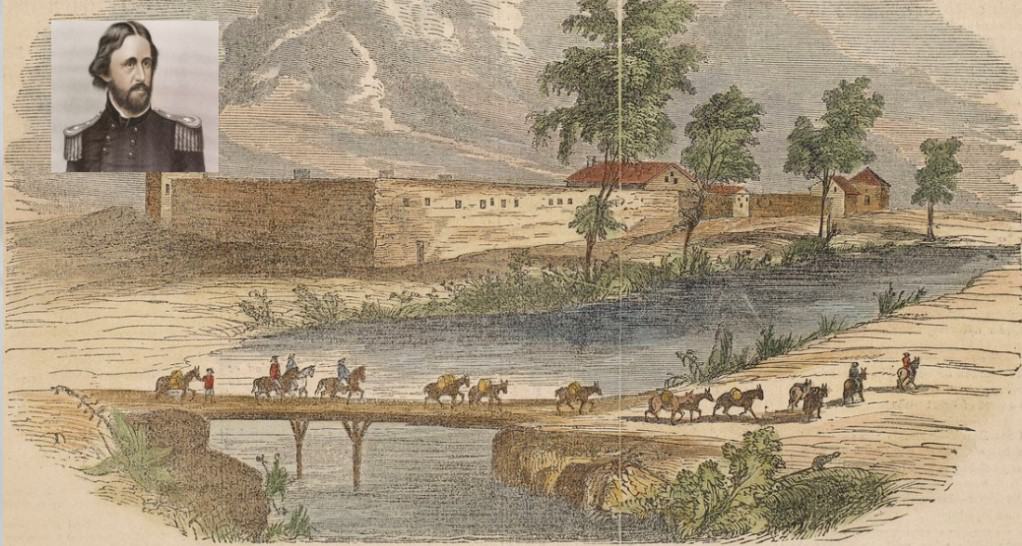
John C. Frémont and Raphael Rivera
Rivera’s expedition played a crucial role in shaping Fremont’s later explorations. During his travels, Rivera had encountered the diverse geography and natural resources of the American West. His descriptions and maps became valuable resources for future explorers, including John C Fremont. Fremont studied Rivera’s accounts and utilized the information to plan his own expeditions.
The San Pedro, Los Angeles & Salt Lake Railroad, later known as the Union Pacific Railroad, was the primary company responsible for building the railroad to Las Vegas.
While Rivera’s and Frémont’s expeditions did not explicitly endorse the construction of railways to Las Vegas, their explorations and the knowledge they generated about the region undoubtedly contributed to the broader understanding of the area’s potential and viability for transportation infrastructure.
John C. Frémont and Las Vegas
One of John C. Fremont’s notable expeditions was the mapping of the Las Vegas Valley. In 1843, Fremont embarked on his fourth expedition, known as the Great Basin Expedition. During this journey, he and his team meticulously surveyed and mapped large parts of the West, including the Las Vegas Valley. Fremont’s detailed maps provided valuable information about the region’s topography, water sources, and potential for settlement.
John C. Fremont’s connection to Las Vegas is a fascinating tale of exploration, discovery, and the lasting impact of one man’s vision. His explorations and documentation of the Las Vegas Valley laid the foundation for the city’s future development, and his legacy can still be seen and felt today. As we enjoy the vibrant lights and bustling entertainment of Las Vegas, let us remember the contributions of John C. Fremont, a key figure in the city’s historical narrative.
Impact on the Development of Las Vegas
Fremont’s mapping of the Las Vegas Valley played a pivotal role in the subsequent development of the area. The detailed maps and reports he produced not only provided valuable information to future settlers but also sparked interest in the region. The presence of reliable water sources and favorable conditions for agriculture made the Las Vegas Valley an attractive destination for those seeking new opportunities in the West.
Fremont Street: A Tribute to John C. Fremont
A prominent tribute to John C. Fremont’s influence on Las Vegas can be found in the heart of downtown. Fremont Street, named after the famed explorer, has become an iconic landmark in the city. This vibrant pedestrian mall offers a unique blend of entertainment, dining, and historical charm. Visitors can stroll along the street, marvel at the dazzling light shows, and immerse themselves in the lively atmosphere that pays homage to John C. Fremont’s legacy.
Fremont’s Legacy in Las Vegas Today
John C. Fremont’s legacy continues to shape Las Vegas today. His explorations and mapping efforts paved the way for the region’s growth and development. Las Vegas, once a modest settlement, has transformed into a thriving metropolis known for its world-class entertainment, luxurious resorts, and bustling nightlife. The spirit of exploration and discovery that Fremont embodied remains a fundamental part of the city’s identity.
John C. Frémont: The Trailblazing Expeditionist
John Charles Frémont was born on January 21, 1813, in Savannah, Georgia. Raised in Charleston, South Carolina, he developed a deep fascination with science, particularly the fields of geology and topography. Frémont’s thirst for adventure and exploration led him to pursue a career that would take him to the uncharted territories of the American West. Growing up in Charleston, South Carolina, Frémont developed a deep passion for science and the natural world from an early age. Frémont’s childhood was filled with curiosity and a thirst for knowledge. He spent countless hours exploring the natural landscapes surrounding Charleston, studying the diverse flora and fauna that captivated his young mind. These formative experiences instilled in him a profound appreciation for the wonders of the natural world and a desire to unravel its mysteries.
As Frémont matured, his interest in science continued to grow. He displayed a particular fascination for geology and topography, driven by a desire to understand the Earth’s physical features and how they came to be. This scientific inclination shaped his worldview and ultimately led him to a career that would allow him to explore the uncharted territories of the American West.
In his early adulthood, Frémont embarked on a path that would intertwine his passion for exploration with his scientific pursuits. He enrolled at the College of Charleston, where he deepened his knowledge of mathematics, astronomy, and the natural sciences. These academic endeavors provided him with the necessary foundation to embark on his future expeditions and make significant contributions to the field of geography.
Frémont’s journey as an expeditionist truly began when he crossed paths with Senator Thomas Hart Benton. Benton, who would later become Frémont’s father-in-law, recognized his potential as an explorer and saw an opportunity to advance the scientific understanding of the western territories. Through Benton’s political connections and support, Frémont secured funding and resources for his expeditions, marking the beginning of a fruitful partnership that would shape the course of his career.
Equipped with an insatiable thirst for knowledge, Frémont embraced the challenges and uncertainties that awaited him in the unexplored territories of the American West. He understood the immense responsibility that came with the task of mapping and documenting these vast regions, realizing that his work would not only contribute to scientific knowledge but also support the country’s westward expansion.
Frémont’s early life and background laid the groundwork for his extraordinary achievements as an expeditionist. His inquisitive nature, combined with a solid academic foundation and the support of influential figures like Thomas Hart Benton, propelled him to embark on a series of daring expeditions that would shape the history of western exploration. Through his courage, scientific acumen, and unwavering determination, Frémont became an indelible figure in the annals of American exploration, leaving a lasting legacy in the exploration and settlement of the American West.
The First Expedition: Mapping the West
The Role of Thomas Hart Benton
John C. Frémont’s career as an expeditionist was propelled by his association with Senator Thomas Hart Benton, who envisioned the exploration and mapping of the western territories. Benton, Frémont’s father-in-law, utilized his political influence to secure funding and support for Frémont’s expeditions. This partnership proved to be instrumental in Frémont’s success as an explorer.
The First Expedition
In 1842, Frémont embarked on his first major expedition to survey the region between the Mississippi River and the Rocky Mountains. This expedition aimed to gather valuable geographic and scientific data about the vast western territories. Frémont’s meticulous documentation and mapping of the terrain earned him recognition and acclaim among the scientific community. John C. Frémont’s first expedition marked the beginning of his illustrious career as an explorer and mapmaker of the American West. Undertaken in 1842, this ambitious endeavor aimed to survey the region between the Mississippi River and the Rocky Mountains, unraveling the mysteries of the uncharted western territories.
The success of the first expedition was attributed not only to Frémont’s adventurous spirit but also to the invaluable support and guidance he received from his father-in-law, Senator Thomas Hart Benton. Through Benton’s political influence and belief in Frémont’s abilities, the expedition secured the necessary funding and resources to embark on this groundbreaking mission.
With a team of skilled explorers and scientists, Frémont set out on his expedition, equipped with state-of-the-art surveying instruments, navigational tools, and provisions for the arduous journey that lay ahead. Their mission was twofold: to gather accurate geographic and scientific data about the western territories and to chart a path that would facilitate future exploration and settlement.
As the expedition progressed, Frémont and his team encountered a myriad of challenges. They faced treacherous terrains, unpredictable weather conditions, and limited resources, pushing their physical and mental endurance to the limits. However, their determination to uncover the secrets of the West kept them steadfast in their mission.
One of the notable accomplishments of the first expedition was Frémont’s meticulous documentation and mapping of the terrain. Utilizing his keen observational skills, he meticulously recorded geographical features, including mountains, rivers, and valleys, as well as the flora and fauna encountered along the way. Frémont’s detailed notes and accurate maps became invaluable resources for future explorers, settlers, and government officials seeking to understand and navigate the western territories.
Beyond mapping the land, Frémont’s expedition also had a significant scientific impact. The team conducted various scientific experiments, collected botanical and geological specimens, and documented meteorological data. These scientific endeavors contributed to a deeper understanding of the natural world, paving the way for further scientific exploration and research in the West.
Furthermore, Frémont’s expedition played a crucial role in fueling public interest in the western territories. His vivid descriptions and captivating narratives of the landscapes, natural wonders, and potential opportunities for settlement captured the imagination of the American people. Frémont’s published reports and lectures generated widespread enthusiasm for western expansion, encouraging migration and exploration of the uncharted regions.
The first expedition not only solidified Frémont’s reputation as a skilled explorer and mapmaker but also established his legacy as a key figure in the exploration and settlement of the American West. His dedication to accurate mapping, scientific inquiry, and his ability to inspire others with his vivid storytelling laid the groundwork for future expeditions and the opening of new frontiers in the western territories.
The success of the first expedition set the stage for Frémont’s subsequent explorations and solidified his place in history as one of the most influential figures in the exploration and expansion of the American West. His remarkable achievements and unwavering commitment to discovery and knowledge continue to inspire adventurers, scientists, and enthusiasts alike, leaving an indelible mark on the rich tapestry of American exploration.
John C. Frémont, also known as “The Pathfinder,” was an American explorer who played a significant role in the exploration of the American West during the 19th century. Throughout his career, Frémont worked with several notable individuals on various expeditions. Here are some of the explorers he collaborated with and the expeditions they undertook:
Joseph N. Nicollet: Frémont’s first major collaboration was with Joseph N. Nicollet, a French scientist and geographer. In 1838, Frémont accompanied Nicollet on an expedition to map the lands between the Mississippi and Missouri Rivers. The expedition aimed to gather scientific data, study Native American tribes, and explore the region’s geology and geography.
Charles Preuss: Charles Preuss, a Prussian-born cartographer, was an important member of several of Frémont’s expeditions. Preuss accompanied Frémont on his first and second exploratory journeys to the West in 1842 and 1843. Their primary objective was to map and survey the Oregon Trail and investigate the Great Salt Lake.
Kit Carson: One of Frémont’s most renowned companions was Christopher “Kit” Carson, a legendary frontiersman and trapper. Carson joined Frémont on multiple expeditions, including the Third, Fourth, and Fifth Frémont Expeditions. Together, they explored the Great Basin, crossed the Sierra Nevada Mountains, surveyed the Sacramento Valley, and even ventured into Mexican-controlled California during the Bear Flag Revolt.
Charles F. Lander: Charles F. Lander was a civil engineer and surveyor who joined Frémont on his fifth and final expedition in 1853. The expedition aimed to find a viable railroad route to the Pacific Ocean and survey the Gila River in Arizona. Unfortunately, the journey faced numerous hardships, including extreme weather conditions and strained relations with Native American tribes, leading to the expedition’s premature end.
Samuel Parker: During his fourth expedition in 1848, Frémont was briefly accompanied by Samuel Parker, an experienced mountain man and trapper. Parker provided valuable assistance to the expedition in navigating the rugged terrain of the Sierra Nevada Mountains. However, he left the group before their eventual journey into California.
Edward Kern: Edward Kern, an artist and topographer, was part of Frémont’s third expedition in 1845. The expedition aimed to explore the Central Valley of California and map the region. Kern’s artistic skills were instrumental in capturing the landscapes, flora, and fauna encountered during the journey.
John B. Floyd: John B. Floyd, a future governor of Virginia and Secretary of War, joined Frémont’s second expedition in 1843. The expedition’s primary objective was to map the Oregon Trail and explore the Great Salt Lake. Floyd’s political connections provided support and resources for the expedition.
Richard Kern: Richard Kern, the younger brother of Edward Kern, accompanied Frémont on his fourth expedition in 1848. Richard served as an artist and topographer, documenting the landscapes, geological formations, and Native American encounters along the way.
Thomas Fitzpatrick: Thomas Fitzpatrick, a seasoned mountain man and guide, played a crucial role in guiding Frémont’s first three expeditions. Fitzpatrick’s intimate knowledge of the Rocky Mountains and his skills as a scout were invaluable to the success of the journeys.
Jesse Benton Frémont: Jesse Benton Frémont, John C. Frémont’s wife, accompanied him on his fourth expedition in 1848. She was not only a dedicated partner but also contributed to scientific observations and kept detailed journals during the journey.
François Xavier Aubry: François Xavier Aubry, a French trapper and fur trader, joined Frémont on his second expedition in 1843. Aubry provided valuable expertise in navigating through the rugged wilderness and had extensive knowledge of the region’s fur trade and Native American tribes.
William H. Emory: William H. Emory, a topographical engineer, accompanied Frémont on his fifth expedition in 1853. Emory was responsible for conducting detailed surveys and producing accurate maps of the areas explored. His expertise in cartography greatly contributed to the expedition’s scientific and geographical objectives.
Alexander Godey: Alexander Godey, a skilled hunter and frontiersman, joined Frémont on his third expedition in 1845. Godey’s knowledge of survival in the wilderness and ability to provide sustenance through hunting proved invaluable to the expedition’s success.
Randolph Benton Marcy: Randolph Benton Marcy, an experienced Army officer and explorer, collaborated with Frémont on his fourth expedition in 1848. Marcy’s military background and leadership skills were crucial in maintaining discipline and organization during the challenging journey.
Charles L. D. Loeser: Charles L. D. Loeser, a physician and surgeon, accompanied Frémont on his fifth expedition in 1853. Loeser’s medical expertise was essential in treating injuries and illnesses that occurred during the arduous journey through remote and treacherous territories.
Richard Owen: Richard Owen, a geologist and paleontologist, joined Frémont on his second expedition in 1843. Owen’s expertise in studying rocks, fossils, and geological formations provided valuable insights into the geological history of the regions explored.
Benjamin Louis Eulalie de Bonneville: Although not a direct collaborator, Frémont’s expeditions were inspired by the earlier explorations of Benjamin Louis Eulalie de Bonneville. Bonneville’s journeys in the 1830s laid the groundwork for Frémont’s exploratory efforts in the American West.
James Dwight Dana: James Dwight Dana, a prominent geologist and mineralogist, provided valuable scientific guidance and analysis of the geological specimens collected during Frémont’s expeditions. His expertise enhanced the understanding of the region’s geological features and formations.
John Charles Frémont Jr.: John Charles Frémont Jr., the son of John C. Frémont, accompanied his father on his fifth expedition in 1853. As a young member of the team, he assisted in various aspects of the expedition and learned firsthand about the challenges and rewards of exploration.
Theodore Talbot: Theodore Talbot, a skilled boatman and river guide, joined Frémont on his fourth expedition in 1848. Talbot’s expertise in navigating rivers and handling boats proved invaluable during the expedition’s exploration of the Sacramento River and the San Joaquin River.
These additional explorers and contributors, alongside the previously mentioned individuals, formed a network of scientists, guides, artists, and adventurers who collaborated with John C. Frémont on his expeditions. Their combined efforts helped uncover new territories, map the vast landscapes, and advance scientific knowledge of the American West.
Most Famous Expeditions In The Americas
There have been numerous famous expeditions throughout the Americas that have left a lasting impact on history. Here are ten of the most notable expeditions, along with the individuals involved:
The Lewis and Clark Expedition (1804-1806):
Led by Meriwether Lewis and William Clark, this expedition was commissioned by President Thomas Jefferson to explore and map the newly acquired Louisiana Territory. Their journey took them from the Mississippi River to the Pacific Northwest, encountering various Native American tribes and documenting the region’s flora and fauna.
The Coronado Expedition (1540-1542):
Under the leadership of Francisco Vázquez de Coronado, this expedition aimed to find the legendary Seven Cities of Cibola, rumored to be filled with riches. Although they did not discover the fabled cities, the expedition explored the American Southwest, including present-day Arizona, New Mexico, and Kansas.
The Astor Expedition (1810-1812):
John Jacob Astor organized this expedition to establish a fur trading post at the mouth of the Columbia River in present-day Oregon. Led by Wilson Price Hunt, the expedition consisted of fur trappers, traders, and Native American guides who faced treacherous terrain and harsh conditions along their journey.
The Magellan-Elcano Expedition (1519-1522):
Led initially by Ferdinand Magellan and later completed by Juan Sebastián Elcano, this historic voyage became the first circumnavigation of the globe. The expedition set sail from Spain and navigated through treacherous waters, reaching the Philippines before returning to Spain, demonstrating the earth’s spherical shape.
The Shackleton-Rowett Expedition (1921-1922):
Organized by Ernest Shackleton, this Antarctic expedition aimed to explore and conduct scientific research. Although Shackleton died during the expedition, the team continued under the leadership of Frank Wild and completed valuable scientific studies and geographical mapping.
The Pike Expedition (1806-1807): Led by Zebulon Pike, this expedition sought to explore the southern portion of the Louisiana Territory, including present-day Colorado and New Mexico. Pike and his team encountered the Rocky Mountains and explored the Rio Grande before being captured by Spanish forces.
The Hudson Bay Expedition (1884-1885): Led by Joseph W. Tyrell, this Canadian expedition explored the region surrounding Hudson Bay and the area known as the Barren Lands. The expedition contributed to scientific knowledge by discovering dinosaur fossils and studying the geography of the region.
The Roosevelt-Rondon Scientific Expedition (1913-1914):
Led by Theodore Roosevelt and Cândido Rondon, this expedition ventured into the Brazilian Amazon to explore the River of Doubt (later renamed Roosevelt River). The team faced immense challenges, including treacherous rapids, diseases, and encounters with Indigenous tribes.
The Murchison Expedition (1850):
Led by Scottish geologist Roderick Murchison, this expedition explored the Appalachian Mountains in eastern North America. The team conducted extensive geological surveys, contributing to the understanding of the region’s geological history.
Many Of These Explorers Lost Their Lives
Among the explorers mentioned in the list, several lost their lives during their respective expeditions. Here are the explorers who perished and the circumstances surrounding their deaths:
Meriwether Lewis (Lewis and Clark Expedition): Meriwether Lewis died on October 11, 1809, in Tennessee. The exact cause of his death remains a subject of debate, with theories ranging from suicide to murder. The circumstances surrounding his demise are still unclear.
Francisco Vázquez de Coronado (Coronado Expedition): Coronado survived the expedition but faced disappointment as the search for the Seven Cities of Cibola proved unsuccessful. He later returned to Mexico, where he died on September 22, 1554.
Ferdinand Magellan (Magellan-Elcano Expedition): Ferdinand Magellan was killed during the expedition in the Philippines on April 27, 1521, during a skirmish with the native inhabitants of Mactan Island. He was struck by a poisoned arrow and succumbed to his wounds.
Ernest Shackleton (Shackleton-Rowett Expedition): Ernest Shackleton died on January 5, 1922, due to a heart attack while the expedition ship, Quest, was moored off South Georgia Island in the Southern Atlantic Ocean. His body was laid to rest on the island.
Joseph W. Tyrell (Hudson Bay Expedition): Joseph W. Tyrell survived the expedition and continued his geological and paleontological work. He passed away on August 26, 1957, in Toronto, Canada, after a long and successful career.
Theodore Roosevelt (Roosevelt-Rondon Scientific Expedition): Theodore Roosevelt survived the expedition, but it took a toll on his health. He later passed away on January 6, 1919, due to a heart attack at his home in Oyster Bay, New York.
Zebulon Pike (Pike Expedition): Zebulon Pike, after completing the expedition, continued his military career. However, in 1813, during the War of 1812, Pike was killed in action at the Battle of York (present-day Toronto) while leading American troops in an assault on the British stronghold.
Roderick Murchison (Murchison Expedition): Roderick Murchison, the leader of the expedition, survived the journey. However, he passed away on October 22, 1871, in London, England, due to natural causes, marking the end of a prolific career in geology and exploration.
No members of the Lewis and Clark Expedition, the Astor Expedition, the Shackleton-Rowett Expedition, or the Apollo 11 Mission lost their lives during their respective journeys.
It is worth noting that exploration can be dangerous, and throughout history, many explorers have faced perilous conditions, harsh environments, conflicts with indigenous peoples, accidents, diseases, and other unforeseen challenges. The explorers mentioned here represent a range of outcomes, with some meeting tragic ends while others successfully returned from their expeditions to continue their contributions in various fields.
Explorers Buried while On The Expedition
The burial practices for the explorers varied depending on the circumstances and locations of their deaths. Here’s a breakdown:
Meriwether Lewis (Lewis and Clark Expedition): Meriwether Lewis was buried near the spot where he died, at Grinder’s Stand in Tennessee. His body was laid to rest on the property of the inn where he had spent his last night. The exact location of his grave remains uncertain, as no headstone or marker was placed at the time of his burial.
Ferdinand Magellan (Magellan-Elcano Expedition): After Ferdinand Magellan was killed in the Philippines during the expedition, his body was initially held by the local inhabitants. Eventually, it was returned to his crew, and he was buried at an unknown location on the island of Mactan.
For the other explorers mentioned in previous responses who passed away at a later time or due to natural causes, they were typically buried in more established locations, such as cemeteries or family plots. These locations vary depending on their home countries or places of significance in their lives.
It is important to note that burial practices during expeditions were often influenced by the circumstances and available resources at the time. In some cases, a simple burial without elaborate markers or headstones was conducted due to the challenging conditions and limited means.
The Impact of Frémont’s Maps
Frémont’s maps became invaluable resources for future explorers, settlers, and government officials. His accurate depictions of the topography, rivers, and mountain ranges provided crucial information for navigating and understanding the western territories. These maps facilitated the opening of new trails and routes, paving the way for further exploration and settlement. The impact of John C. Frémont’s maps on the exploration and settlement of the American West cannot be overstated. His accurate depictions of the region’s topography, rivers, and mountain ranges provided invaluable information for navigating the vast and often treacherous western territories. Frémont’s maps became essential tools for future explorers, settlers, and government officials, shaping the course of western expansion and facilitating the opening of new trails and routes.
One of the significant contributions of Frémont’s maps was their role in guiding westward migration. As pioneers ventured into the unknown, they relied heavily on Frémont’s meticulously crafted maps to navigate through unfamiliar landscapes. These maps provided crucial information about water sources, natural landmarks, and potential hazards, ensuring safer and more efficient journeys for those seeking new opportunities in the West.
Frémont’s maps also played a vital role in the economic development of the western territories. By accurately charting the regions’ resources, such as timber, minerals, and fertile lands, his maps provided valuable insights into the economic potential of the West. The information they contained helped attract investors, entrepreneurs, and prospectors, driving economic growth and spurring the establishment of new industries and settlements.
Furthermore, Frémont’s maps served as important references for government officials involved in the administration and governance of the western territories. The accuracy and level of detail in his maps enabled policymakers to make informed decisions regarding land management, infrastructure development, and resource allocation. Frémont’s contributions helped shape the legal and administrative frameworks necessary to govern the rapidly expanding western frontier.
Beyond their practical applications, Frémont’s maps also had aN impact on the public’s perception of the American West. Through his vivid descriptions and detailed illustrations, he brought the West to life for those who had never set foot in its vast landscapes. Frémont’s maps ignited the imagination of the American people, fueling their interest and curiosity about the region. They sparked a sense of adventure and opportunity, inspiring individuals and families to embark on their own journeys of exploration and settlement.
Moreover, Frémont’s maps provided a foundation for scientific research and understanding of the western territories. They served as reference points for geologists, botanists, and other scientists studying the region’s natural history, contributing to the expanding body of knowledge about the diverse ecosystems and geological formations of the American West.
In summary, the impact of Frémont’s maps on the exploration, settlement, and development of the American West cannot be overstated. These meticulously crafted representations of the region’s geography provided crucial guidance, shaping the movements of pioneers and influencing the trajectory of westward expansion. Frémont’s maps not only facilitated safe and efficient travel but also fueled economic growth, influenced policy decisions, and inspired generations of adventurers. Their accuracy and level of detail laid the groundwork for scientific exploration and contributed to our understanding of the West’s natural and cultural heritage. Frémont’s cartographic achievements remain a testament to his enduring legacy as a trailblazing explorer and mapmaker of the American West.
The Second Expedition: Crossing the Great Basin
The Oregon Trail and Westward Expansion
During the mid-19th century, the Oregon Trail served as a lifeline for westward migration. Frémont’s second expedition, conducted in 1843, aimed to map a new, shorter route to the Oregon Territory. This route would not only benefit settlers but also support the government’s vision of manifest destiny and westward expansion.
The Exploration of the Great Basin
Frémont’s second expedition proved to be a challenging and arduous endeavor. His team faced harsh conditions, including extreme weather, rugged terrain, and limited resources. Despite these obstacles, Frémont and his team successfully crossed the Great Basin, documenting and mapping this previously unknown region.
Frémont’s Legacy in the Great Basin
Frémont’s exploration of the Great Basin shed light on its geographical features, natural resources, and potential for settlement. His detailed reports and maps encouraged further exploration and facilitated the eventual development of the region. Today, the Great Basin is recognized as an essential part of the American West, thanks in part to Frémont’s contributions. John C. Frémont’s legacy in the Great Basin region of the American West is one that continues to resonate to this day. His exploration and mapping of this previously unknown and mysterious area left an indelible mark on the understanding, development, and appreciation of the Great Basin.
Frémont’s expedition through the Great Basin in 1843 was a monumental achievement, considering the challenging and inhospitable nature of the region. The Great Basin, characterized by its vast desert landscapes, rugged mountains, and scarcity of water, presented numerous obstacles to exploration and settlement. However, Frémont’s determination, resilience, and scientific acumen allowed him to overcome these challenges and shed light on the region’s unique features and potential.
One of the significant contributions of Frémont’s exploration was the detailed documentation and mapping of the Great Basin’s geographical features. His team meticulously recorded the intricate network of mountain ranges, valleys, and basins that compose the region. Frémont’s maps provided accurate representations of the topography, enabling future explorers, settlers, and scientists to navigate and understand the region’s complex terrain.
Frémont’s maps of the Great Basin were not only instrumental in facilitating subsequent exploration but also in attracting settlers to the area. By providing a visual depiction of the region’s landforms and resources, his maps sparked interest in the Great Basin’s potential for agricultural development, mining, and other economic activities. They served as a guide for those seeking new opportunities in the West, encouraging migration and contributing to the region’s growth and prosperity.
Furthermore, Frémont’s exploration of the Great Basin revealed valuable scientific insights into its natural history and resources. His observations of the region’s flora, fauna, and geological formations enriched the scientific understanding of the area. Frémont documented the presence of unique plant and animal species, identified geological formations and mineral resources, and collected valuable scientific specimens. His reports and findings contributed to broader scientific knowledge about the Great Basin’s biodiversity, geology, and ecology.
Frémont’s legacy in the Great Basin extends beyond his exploration and mapping. His expeditions brought public attention to the region, captivating the imagination of the American people and fueling interest in its distinctive landscapes and potential. Frémont’s vivid descriptions and narratives captured the beauty and allure of the Great Basin, inspiring others to explore and settle in the region.
Today, the impact of Frémont’s legacy in the Great Basin can be seen in various aspects of the region’s cultural and natural heritage. His contributions laid the foundation for future scientific research, conservation efforts, and appreciation of the area’s unique ecosystems. Frémont’s maps continue to serve as valuable historical documents and references for researchers, historians, and land management professionals, contributing to our understanding of the Great Basin’s past and present.
In conclusion, John C. Frémont’s exploration and mapping of the Great Basin left an enduring legacy in the region. His meticulous documentation and accurate maps provided vital knowledge for subsequent exploration, settlement, and scientific study. Frémont’s contributions sparked interest in the region’s economic potential, attracting settlers and fostering development. His legacy in the Great Basin stands as a testament to his role as a pioneering explorer and his lasting impact on the understanding and appreciation of the American West.
The Third Expedition: Charting the West Coast
Mapping the Oregon and California Territories
John C. Frémont’s third expedition, often referred to as the “Pathfinder Expedition,” marked a significant chapter in his exploration of the American West. Undertaken in 1845, this ambitious venture aimed to chart the unexplored regions of the West Coast, including California, Oregon, and the Pacific Northwest.
Frémont’s expedition was propelled by both scientific curiosity and the geopolitical interests of the United States. The West Coast was a region of great strategic importance, and Frémont’s mission was to gather accurate information about the area’s geography, resources, and potential for settlement. With the support of the U.S. government, he assembled a team of experienced explorers, scientists, and guides to embark on this historic journey.
The expedition commenced in the spring of 1845, as Frémont and his team ventured westward from the Missouri River. They traversed the rugged Rocky Mountains, navigating treacherous terrains and encountering harsh weather conditions along the way. Frémont’s leadership skills and ability to adapt to challenging circumstances were crucial in ensuring the survival and progress of the expedition.
As the expedition approached the West Coast, Frémont and his team faced new and daunting challenges. They encountered dense forests, vast rivers, and impassable mountain ranges. However, with unwavering determination and the assistance of local Indigenous guides, Frémont’s team managed to overcome these obstacles and push forward.
One of the notable achievements of the third expedition was Frémont’s mapping of the West Coast. His team meticulously surveyed the coastline, charting the intricate network of bays, rivers, and headlands that lined the Pacific Ocean. Frémont’s accurate maps provided valuable navigational information for future maritime exploration, ensuring safer and more efficient sea travel along the West Coast.
Furthermore, Frémont’s expedition played a significant role in the geopolitical landscape of the time. At that period, tensions between the United States and Mexico were mounting, and the West Coast held strategic importance for both nations. Frémont’s exploration and mapping of the region provided the United States with valuable territorial claims, as well as insights into the military and economic advantages of the West Coast.
Frémont’s expedition also had a lasting cultural impact on the West Coast. His team documented the natural wonders and diverse ecosystems of the region, providing the American public with vivid descriptions and illustrations of the area’s scenic beauty. Frémont’s published reports and lectures captivated the imagination of the American people, sparking interest in the West Coast as a destination for exploration, settlement, and economic opportunity.
Moreover, Frémont’s expedition was instrumental in paving the way for future westward expansion and the establishment of American dominance along the West Coast. The accurate maps and detailed reports generated by Frémont’s team provided valuable information for subsequent settlers, entrepreneurs, and government officials. They served as guides for those seeking new lands, resources, and opportunities, contributing to the development and growth of cities and industries along the West Coast.
In conclusion, John C. Frémont’s third expedition, the Pathfinder Expedition, was a landmark undertaking that charted the unexplored territories of the West Coast. His accurate mapping, scientific observations, and geopolitical insights left a profound impact on the understanding, development, and settlement of the region. Frémont’s expedition not only contributed to the expansion of American influence but also fostered public interest and appreciation for the West Coast’s natural wonders. His legacy as an explorer, mapmaker, and pathfinder continues to inspire and inform our understanding of the rich history and diverse landscapes of the American West.
Las Vegas and Gambling History
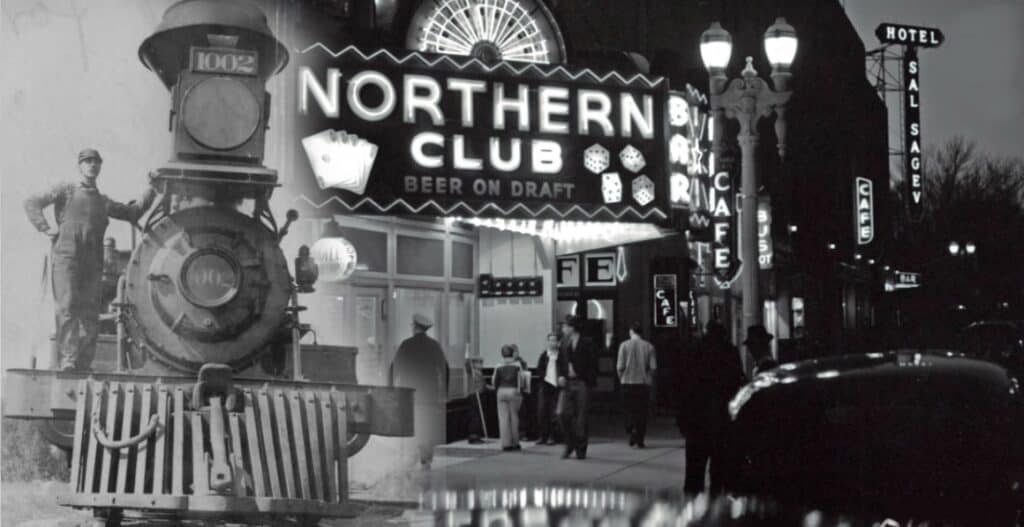
Las Vegas History: Railroad Development Paved the Way for Las Vegas to Become the Gambling Capital of the World
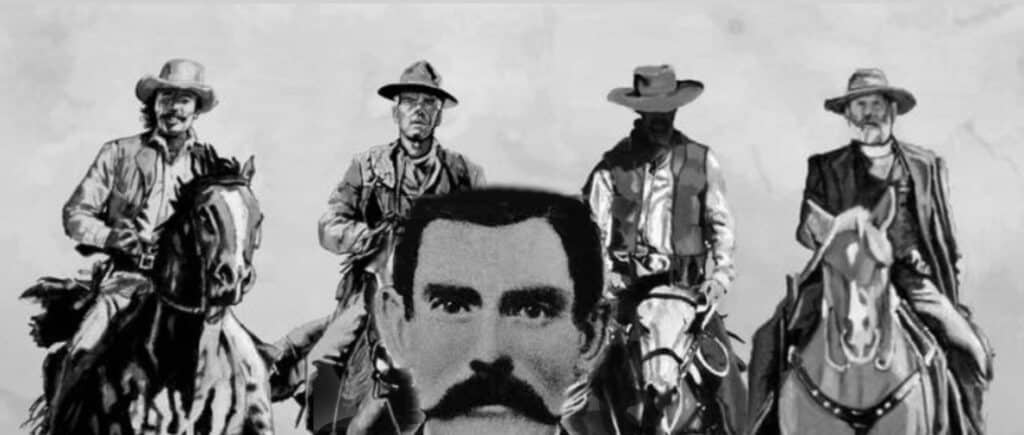
Las Vegas History: Doc Holliday Famous Gambler Gunslinger and Resident of Las Vegas
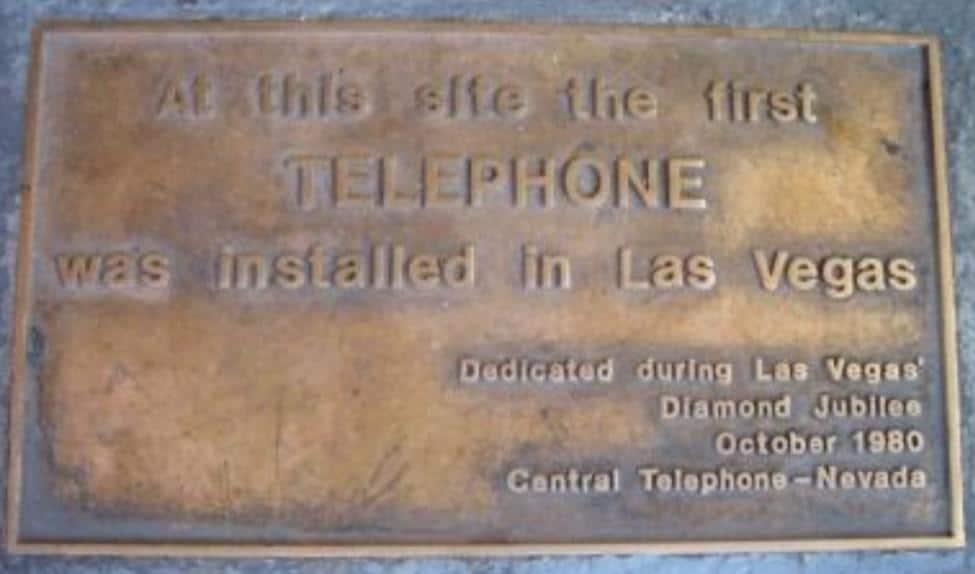
Las Vegas History: How Las Vegas’ First Telephone Exchange Made Bugsy Siegel’s Race Wire Possible

Las Vegas History: The Official Naming of Las Vegas 1905
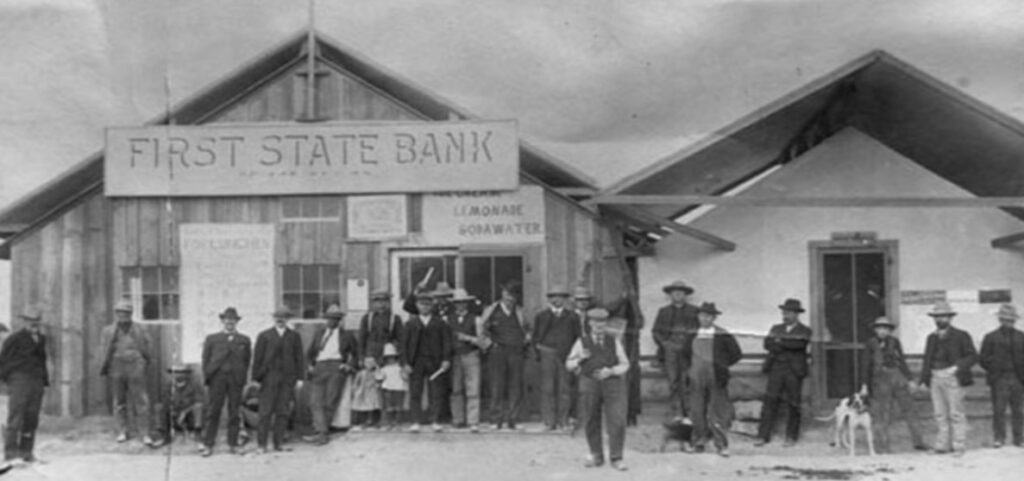
Las Vegas History: 1864 Las Vegas The Impact of Nevada Statehood

Las Vegas History: Las Vegas and It’s Vices in the 1850s
Frequently Asked Questions (FAQs)
1. Who was John C. Frémont?
John C. Frémont, full name John Charles Frémont, was an American explorer, military officer, and politician who played a significant role in the western expansion of the United States during the 19th century. He was known as “The Pathfinder” for his explorations in the American West.
2. What is John C. Frémont’s connection to Las Vegas?
While John C. Frémont did not have a direct connection to the founding of Las Vegas, his explorations in the mid-19th century helped to open up the western territories, including parts of what is now Nevada. His expeditions contributed to the mapping and understanding of the American West, influencing subsequent settlement and development.
3. When did John C. Frémont explore the Las Vegas area?
John C. Frémont explored the western territories in the 1840s. While he didn’t specifically explore the Las Vegas area, his expeditions covered vast regions, and his mapping efforts contributed to the broader knowledge of the geography and resources of the American West.
4. What were some of John C. Frémont’s notable expeditions?
Frémont led several expeditions, including the famous exploring expeditions of the American West in the 1840s. One of his most significant journeys was the third expedition (1845–1846), during which he and his team explored parts of present-day Oregon, California, and Nevada.
5. Did John C. Frémont have any impact on the development of Las Vegas?
While Frémont did not have a direct impact on the development of Las Vegas, his explorations paved the way for westward expansion and the eventual development of the region. The knowledge gained from his expeditions contributed to the broader understanding of the geography and resources of the American West.
6. Is there a monument or memorial to John C. Frémont in Las Vegas?
Yes! Fremont Street!
7. Where can I learn more about John C. Frémont in Las Vegas?
While there may not be a specific museum or exhibit dedicated solely to John C. Frémont in Las Vegas, local historical societies, museums, or libraries may have information about his explorations and their impact on the region. Additionally, online resources and historical archives can provide more in-depth information about Frémont’s contributions to the American West.





